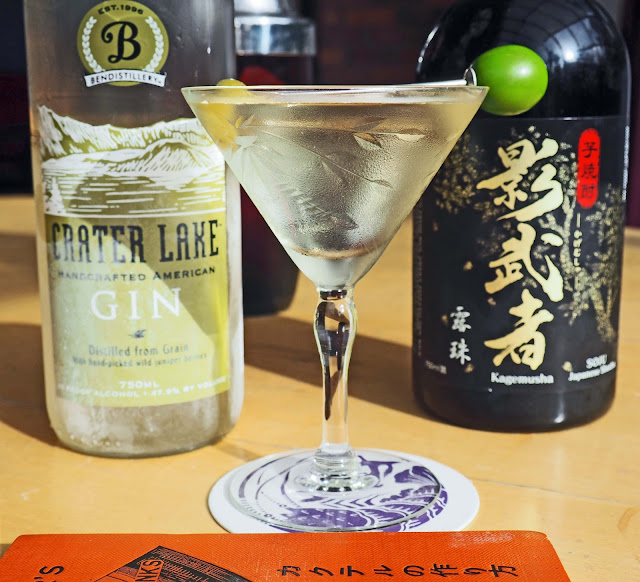It would be an odd man who went to Tokyo specifically for the
martinis. On the other hand, if you were
a martini enthusiast, and you found yourself in a Tokyo bar where there was a
martini on the drinks list, it would be an even odder man who could resist checking
out the local variations. I did not
resist.
And so at the Granbell Hotel – the bar of which looked very slightly
like this (it’s a photograph from the website):
I had a martini which looked exactly like this (it's my photograph):
I was at a table and didn't see how it was made, but it wasn’t at all bad. And later at the Gracery Hotel, the bar of which looked more or less like this (again, a website shot):
And you could look out the window and see this (really):
The martini looked like this:
And yes, that’s how it came, I didn't drink half of it before taking the picture. And here’s a thing. Those of us who like the martini tend to
enjoy the process, the ritual, involved in making it. We like the delayed gratification as we watch
the ingredients being assembled, the shaking or stirring, the impaling and
insertion of the olive. And we know the
Japanese enjoy rituals too: the tea
ceremony, various water rituals, setsuban, seppuki, and whatnot.
So it hardly came as a surprise that the bartender at
the Gracery was ritualistic and ceremonious.
An ice pick was used to chip the ice off a block that was of a
staggering clarity, ingredients were measured more precisely than I’ve ever
seen anywhere, Angosura bitters were involved, the olive came on an elegant
metal cocktail stick. I thought about
stealing it, obviously, but resisted, thinking it would be bad form, and might
bring shame on my family for generations.
And this Gracery martini was perfectly good too, the only problem, I
could obviously drink ‘em quicker than the bartender could make ‘em. I decided one was enough.
Google
“Tokyo martini” and you’ll be led to a recipe from the America Bartending School involving
one ounce sake and two ounces Cucumber Vodka – a basil or mint leaf garnish is
optional. Really? I mean really. It gets worse. Bobby Flay has a recipe for a saketini, which
involves two and a half ounces of sake, an ounce of vodka and a Japanese
cucumber garnish. Great minds with half
a thought between them.
I could see
substituting sake for vermouth, but now back home I didn’t have any sake to hand, whereas
there was some shochu (distilled from sweet potatoes) chilling in the fridge. Shochu
is stronger than sake, also stronger than vermouth – but I work with the
materials I have to hand. It looked like
this:
I’m calling it the Shinjuku martini, though I don't imagine I'm really the first to make one. It tasted OK, but it’s not one of great drinks, I think. You can taste the gin and you can taste the shochu, but they don’t really combine. You could pretend this is symbol of east/west relations, but I won’t. I can’t honestly say that its taste transports me back to old Shinjuku but it’s a start.







No comments:
Post a Comment